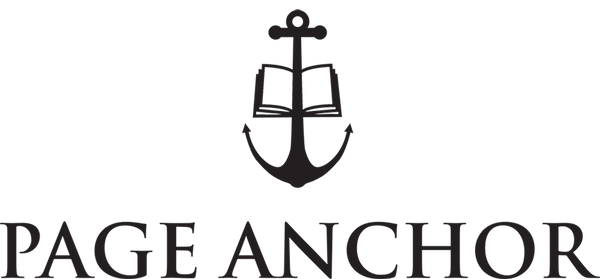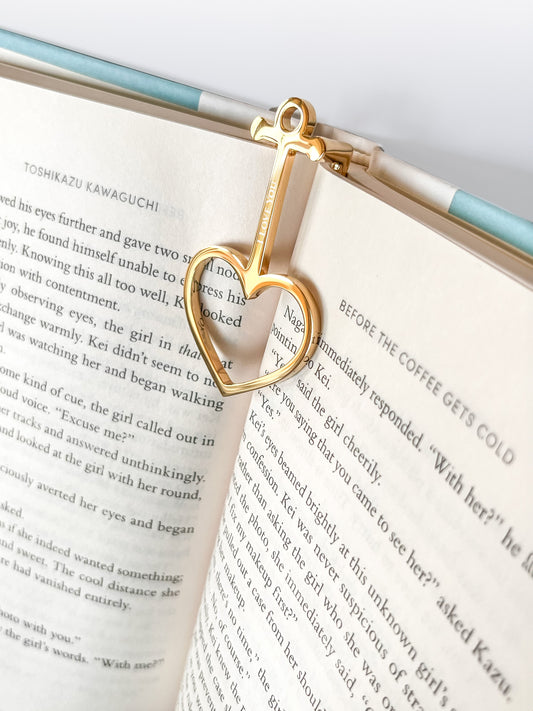Which Books Work Seamlessly with Page Anchor? A Quick Breakdown
If you're scouting the best way to keep your books open without the hassle, you might be wondering about Page Anchor's compatibility. This tool isn't just a pretty bookmark—it's built to handle a wide range of books, making reading smoother for everyone from casual page-flippers to serious notebook users. Let's dive straight into what works, why it matters, and how it fits into your reading routine.
Understanding Page Anchor's Design
Page Anchor is a sturdy, handcrafted device made from 316L stainless steel, designed to slip into books and hold them open effortlessly. Unlike makeshift solutions that bend spines or leave marks, it keeps things intact while freeing your hands for coffee, notes, or just relaxation. The key? It's versatile enough for various book types, as long as they're thicker than a typical magazine. This means no more fighting with floppy pages or awkward angles.
From the product details, it's clear that Page Anchor adapts to different sizes and styles. Whether you're dealing with a thick hardcover novel or a slim journal, the design ensures it slides in smoothly and stays put. This compatibility stems from its polished ion plating, which allows easy insertion without damage, and its lightweight build at just 23 grams—perfect for travel or daily use.
Types of Books That Pair Perfectly
Now, let's get to the heart of your question: What books does it actually work with? Based on the specs, Page Anchor is engineered for anything thicker than a magazine. This opens up a lot of options, from everyday reads to specialized ones. Here's a breakdown to help you visualize:
- Journals and Notebooks: Think daily planners, bullet journals, or the Thinker’s Notebook from Page Anchor's line. These often have flexible spines and multiple pages, and Page Anchor keeps them flat for easy writing or sketching without the book snapping shut.
- Cookbooks: Ever tried following a recipe with a book that won't stay open? Page Anchor excels here. Its grip works on larger, hardcover cookbooks, letting you measure ingredients hands-free and avoiding kitchen mishaps.
- Pocket Books and Paperbacks: As long as they're not as thin as magazines, these portable reads get a boost. Page Anchor's design fits snugly, making it ideal for commutes or quick reads where space is tight.
- Hardcovers and Large Volumes: This is where Page Anchor really shines. Big textbooks, reference guides, or epic novels—anything with a solid spine—benefits from its secure hold. No more thumb cramps from propping open heavy tomes.
- Specialty Books: From art books to travel guides, as long as the book has enough pages to anchor into, you're good. It's even versatile for notebooks like the now-discontinued La Jour, though we recommend checking current products for the best match.
To make this even clearer, here's a quick table comparing book types and how Page Anchor performs:
| Book Type | Why It Works | Key Benefits |
|---|---|---|
| Journals | Flexible spines that need steady support | Allows precise writing; prevents pages from curling |
| Cookbooks | Wide layouts and frequent page flips | Hands-free access; no spine damage during use |
| Paperbacks | Lightweight but prone to closing | Easy to carry and use on the go; maintains readability |
| Hardcovers | Thick, rigid structure | Relieves pressure on thumbs; fits various sizes seamlessly |
| Specialty Books (e.g., art guides) | Detailed pages that require flat viewing | Enhances focus; protects delicate pages from wear |
Why Compatibility Matters and How It Enhances Your Experience
What makes Page Anchor stand out is its ability to work across these categories without issues. It's not just about holding a book open; it's about improving how you interact with it. For instance, if you're a book lover or someone who dives into cookbooks often, this tool eliminates the frustration of pages slipping shut mid-task. The stainless steel body ensures durability, so you can use it repeatedly without worrying about breakage.
One major plus is that it doesn't harm the book's spine. Traditional methods like folding or weighing down pages can cause long-term damage, but Page Anchor's design slides in gently, preserving your collection. Plus, it's ideal for avid readers who tackle everything from light paperbacks to heavy hardcovers in a week. Imagine switching from a quick novel to a detailed journal without changing your setup—that's the flexibility here.
In practice, users report it works best on books with at least the thickness of a standard novel. Thin materials like brochures won't hold, but that's by design to ensure stability. If you're eyeing the BookLover variant (the heart-shaped one), it follows the same principles, so the book types remain consistent across products.
Real-World Tips for Getting the Most Out of It
To maximize Page Anchor, start by testing it on your go-to books. For thicker options like hardcovers, position it near the spine for optimal hold. With journals, place it to keep the page you're working on flat. Remember, the included guide offers quick tips on usage, so don't overlook that.
If you're new to this, think about your reading habits. Do you read in bed, at a desk, or while cooking? Page Anchor adapts, making it a reliable companion. And since it comes with a travel pouch, you can take it anywhere without bulk.
Wrapping It Up and Next Steps
In short, Page Anchor pairs seamlessly with journals, cookbooks, paperbacks, hardcovers, and more—as long as they're thicker than a magazine. This versatility means less hassle and more enjoyment in your reading life. If you're ready to see how it transforms your books




